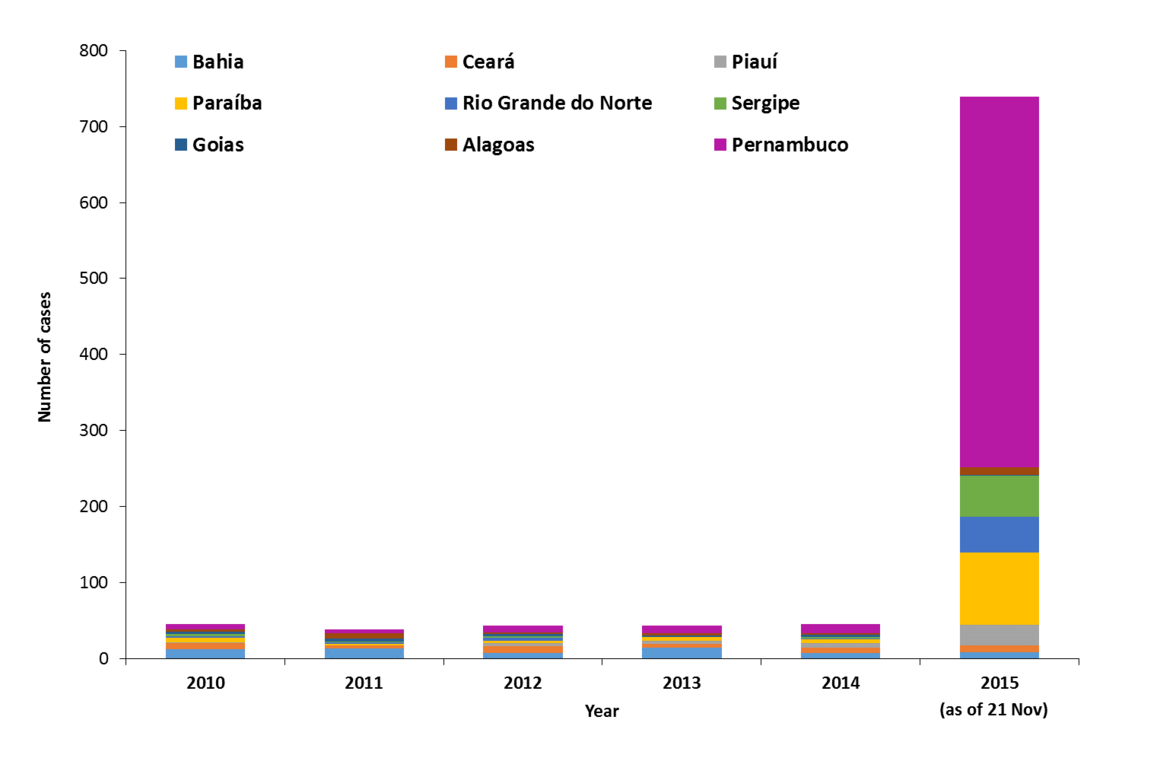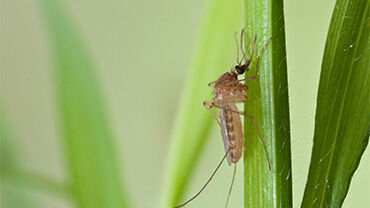Epidemiological update: Complications potentially linked to the Zika virus outbreak, Brazil and French Polynesia
Zika virus infections are spreading in previously unaffected areas of the world.
Zika epidemic
Zika virus infections are still spreading in previously unaffected areas of the world. Since 2014, indigenous circulation of Zika virus (ZIKV) has been detected in the Americas. As of week 47, November 2015, autochthonous cases have been reported by WHO in Brazil, Colombia, Suriname, El Salvador and Guatemala [1]. According to media quoting the national authorities, on 26 November, the first two indigenous cases of ZIKV infection were confirmed in Mexico, one in Chiapas and the second in Nuevo Leon [2]. Autochthonous cases have also been reported from Cape Verde, the Republic of Fiji, the Republic of Vanuatu, Samoa, the French territory of New Caledonia, the Solomon Islands and Indonesia in 2015 [3-5].
Increase in notification of microcephaly in Brazil and Zika virus (ZIKV) infection
Background
On 11 November 2015, the Brazilian Ministry of Health declared a public health emergency in relation to an unusual increase in the number of children born with microcephaly in Pernambuco state during 2015 [6]. An increase of microcephaly was also reported in the states of Paraíba and Rio Grande do Norte. On 17 November 2015, the Brazilian Ministry of Health reported the confirmation by RT-PCR of the presence of ZIKV RNA in amniotic fluid samples collected from two pregnant women with foetal microcephaly from the state of Paraíba [7]. Both pregnant women presented compatible symptoms of ZIKV infection during their pregnancy. The significance of this finding is still under investigation. On 17 November 2015, the Pan American Health Organization/World Health Organization (PAHO/WHO) issued an epidemiological alert regarding the increase in microcephaly in the north east of Brazil. WHO Member States were requested to remain alert to the occurrence of similar events in their territories and to notify any occurrences through the channels established under the International Health Regulations (IHR) [8].
As of 21 November 2015, 739 suspected cases of microcephaly have been identified in 160 municipalities across nine states of Brazil. Pernambuco state has reported the highest number of cases (487) followed by the states of Paraíba (96), Sergipe (54), Rio Grande do Norte (47), Piauí (27), Alagoas (10), Ceará (9), Bahia (8) and Goiás (1) [9].
Figure 1. Number of cases of suspected microcephaly in the nine Brazilian states between 2010 and 21 November 2015

Guillain–Barré syndrome in Brazil
On 25 November 2015, media quoting the Flavivirus Laboratory at the Oswaldo Cruz Institute reported that seven cases of Guillain–Barré syndrome (GBS) had been linked to ZIKV cases in Pernambuco state [10]. The number of cases of GBS increased significantly in the north east of the country between April and June 2015, shortly after the ZIKV epidemic started. According to media, an increase in GBS has been observed in several states across Brazil, with 24 cases in Rio Grande do Norte state between April and June 2015, four times more than the historical average [11]. There have also been increases in Pernambuco (130 cases), Bahia (55 cases), Maranhão (14 cases) and Paraíba (6 cases) states [11]. Investigations are on-going regarding a possible association with ZIKV infection.
Congenital malformations (GBS) in French Polynesia
An increase in central nervous system malformations in foetuses and newborns has also been reported in French Polynesia following an epidemic of ZIKV infection in 2013–2014. The potential link between microcephaly and the Zika virus epidemic is addressed in ECDC’s Rapid Risk Assessment dated 24 November 2015 [12].
MORE INFORMATION:
Zika virus infection
Zika: Factsheet for health professionals
Read the latest risk assessment on microcephaly and Zika: Microcephaly in Brazil potentially linked to the Zika virus epidemic
Other risk assessments on the 2015 Zika outbreak:
Rapid Risk Assessment: Zika virus infection outbreak, Brazil and the Pacific region, 26 May 2015
Rapid Risk Assessment: Zika virus infection outbreak, French Polynesia, 14 February 2015







